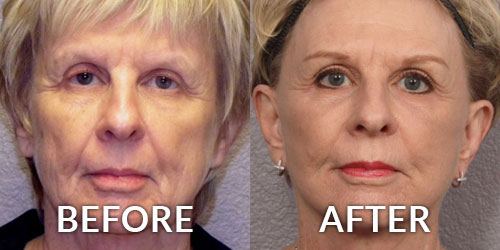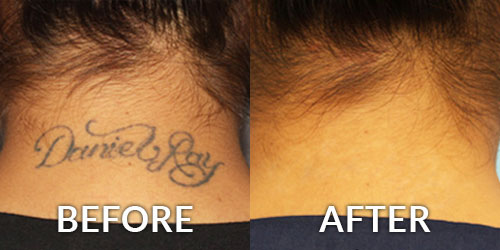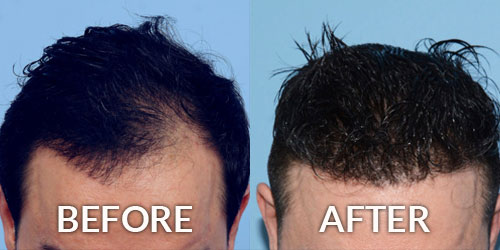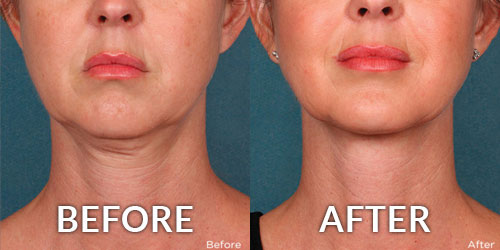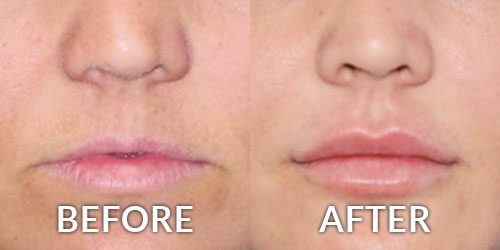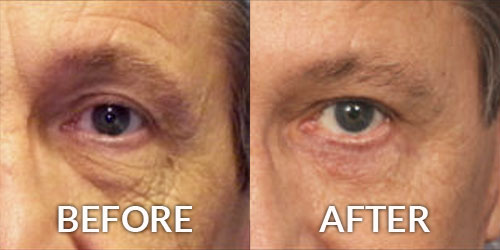Pediatric Dermatology
Consultations offered at our two convenient locations in Phoenix and Scottsdale

Pediatric dermatology is a field of medicine that diagnoses and treats disorders of the skin, hair, and nails of infants, children, and adolescents. Children cannot always say what is bothering them or answer medical questions. The providers at Phoenix Skin Dermatology have the expertise to examine and treat children in a way that puts them at ease and reassures their parents as well. They are also highly regarded in the Phoenix area for their patience and passion for treating pediatric patients, helping to deliver exceptional results without stress.
If your child has a skin condition that has not responded to past treatments, our expert dermatological staff can help them find a treatment that works. Schedule a consultation with one of our dermatologists today to discuss your child’s condition. If you have any questions or would prefer to speak to a staff member over the phone, please call our Phoenix or Scottsdale office at (602) 222-9111 or (480) 473-9111, respectively.
Contents
About Pediatric Dermatology
Children are especially susceptible to skin issues because their bodies are constantly changing and developing. Children’s skin is not only thinner but also significantly different from adult skin. Our dermatologists have special training to address these differences, as well as the psychological aspects of dermatological disorders affecting children.
Parents often seek pediatric dermatology services for diagnoses and treatments tailored to children’s developmental stages. Diaper rashes and other skin issues are common among babies, and these can cause significant discomfort. As children grow, their hormones naturally shift throughout their development. Almost everyone has experienced some degree of teenage hormonal acne, and this is one of the most common skin conditions that we treat at Phoenix Skin.
Our comprehensive approach to pediatric dermatology helps you and your child deal with skin conditions. This improves the lives of not only your children but also your own with less stress. (1)
Common Diagnoses
Acne
Acne vulgaris is a common skin condition that typically emerges during puberty due to hormonal changes and increased oil production in the skin. While most common in adolescents, it is not limited to this demographic and can affect patients of any age. (2) The severity of acne can depend on a patient’s genetics, lifestyle, diet, stress levels, ultraviolet exposure, and many other factors. Each patient responds differently to treatments; some will see improvements by simply changing their skincare routine, while others will require medications like isotretinoin (Accutane). Our dermatologists work with each patient throughout their acne treatment to find a solution that works for them.
Birthmarks
Birthmarks can come in many forms, but are usually red or purple and resemble bruises. There are two main types: vascular and pigmented. Vascular birthmarks can be either hemangiomas or port-wine stain birthmarks and are caused by the malformation of blood vessels. Pigmented birthmarks are caused by pigment cells clustering in the skin. Birthmarks can be genetic, and they are normally benign, but some can increase the risk of skin cancer in patients. (3) It is common for them to fade on their own, but some require treatments like laser therapy, surgical excision, embolization, or medication regimens.
Bug Bites, Stings & Mites
Bug bites and stings create noticeable bumps on the skin. These are typically minor and will fade in time, but some patients, especially those with allergic reactions, will require dermatologic treatment. Normal complications of bug bites and stings are papules (the itchy bumps that emerge after bug bites, especially after mosquito bites) and urticaria. Urticaria, also known as hives, is a condition that causes reddened skin with itchy and sometimes painful bumps. Dermatologists can typically treat these conditions with a topical medicated solution that reduces itching and fights allergic reactions. (4)
Scabies is a common dermatologic condition caused by tiny mites. Patients with this condition will see small scabs, typically on their arms and legs, and will also feel itchy all over their bodies. Lice and chiggers are similar conditions, and these can all be treated with medicated shampoos and topical solutions. (4)
Plants
Certain plants can also cause rashes and allergic reactions in the body. The most well-known of these is poison ivy, but other plants in the genus Toxicodendron, like poison oak, poison sumac, the Chinese lacquer tree, and more, can cause painful, itchy rashes at the site of exposure. This is more common in pediatric patients than adults because children are often not aware of the plants they should avoid when they play. A dermatologist may prescribe a corticosteroid cream if the reaction does not fade naturally. (5)
Cysts
Cysts are lumps of fluid or tissue that emerge on or inside the body. In dermatology, we see epidermoid (sebaceous) cysts the most. These are nodules filled with keratin that are just below the surface of the skin. (6) These cysts range in size and can become painful if left untreated. Treatment involves surgically removing the cyst from the body. This is a simple procedure, and patients can resume their normal activities almost immediately, depending on the location and size of the cyst.
Schedule a Consultation at Phoenix Skin
Eczema
Eczema, or atopic dermatitis, is a common chronic skin condition. Left untreated, eczema can lead to recurring infections and poor quality of life in patients. (7) Eczema is most common in children, but it can affect adults as well. Patients with the condition experience dry, itching skin that develops into a rash due to a lack of moisture and repeated itching. Its exact causes are not entirely known, but one’s environment, genetics, and immune system all play a role in its development. Eczema treatment typically employs medicated, unscented moisturizing lotions and anti-inflammatory medications. Daily application of these is recommended, and dosages can be increased when there are flare-ups. (7)
Hair Disorders
Alopecia is the medical term for hair loss. Patients can lose hair as a result of age, genetics, injury, and more, and it can be temporary or permanent. Pediatric dermatology commonly deals with alopecia areata, a condition of total hair loss on the body. Treating this issue normally gives patients a much higher quality of life and eliminates the teasing they may face from their peers. Treatment will depend on the root causes of each patient’s alopecia, but corticosteroids, patches, and transplants have all been shown to be successful. (8)
Hives
Also known as urticaria, hives are a common immune response to allergic reactions. Many patients, especially in pediatrics, can suffer from chronic urticaria, which is characterized by the persistent or recurring presence of hives for six weeks or more. (9) Left untreated, patients experience diminished life quality and general physical discomfort. Hives can be brought on by allergic reactions, viruses, infections, bacteria, and more, and treatment will require addressing the underlying causes as well as the hives themselves. Our staff will normally prescribe a combination of corticosteroids, topical solutions, antihistamines, anti-inflammatory medications, or antibiotics, depending on the individual patient’s case.
Infections
The skin can become infected by disease, injury, bacteria, viruses, fungi, and more. (10) One of the most common skin infections we treat in pediatric dermatology is athlete’s foot, also known as tinea pedis. This infection occurs when dermatophyte fungi come into contact with bare feet. Over time, the fungi will break down the keratin in the skin, causing it to be weakened and fragile. Foot hygiene also suffers as a result of this condition. (11) Athlete’s foot and other skin infections can be easily addressed with topical treatments. For fungal infections, it helps to reduce the infection’s exposure to humidity and darkness.
Warts
Warts are bumps or skin lesions caused by the human papillomavirus (HPV) and are very common conditions in pediatric dermatology. (12) They can take many forms depending on the strain of HPV that is contracted. Most warts do not cause any painful symptoms, but patients may experience some discomfort depending on their location. Wart treatment is typically very simple and involves either surgical excision or cryotherapy with liquid nitrogen. We recommend that patients try medications, supplements, and topical solutions before receiving a surgical treatment. Wart recurrence is common, but we offer many other medicated treatments that can be incorporated into surgical treatments to eliminate recurring warts. (12)
Moles
Moles are small, commonly occurring skin growths that can appear anywhere on the body. They vary in shape, size, and color and are typically benign, which means they are not cancerous. The presence of moles is normal, but many individuals seek mole removal for cosmetic reasons or concerns about skin health. Atypical moles, or dysplastic nevi, are moles that have become less benign and are beginning to transition into melanoma. These are less common in pediatric dermatology, but if your child has a mole that is concerning, it can be removed to prevent further complications. (13)
Schedule a Consultation at Phoenix Skin
Molluscum
Also known as water warts, molluscum contagiosum is a benign but contagious skin condition. While similar to warts, molluscums are caused by a DNA-containing poxvirus called molluscum contagiosum. (14) Patients can contract this from either direct contact with infected skin or indirectly through shared fabrics, hygiene supplies, toys, and more. This condition is most commonly seen in patients who are between 2 and 6 years of age. Molluscum can be treated in various ways, including cryotherapy, laser treatments, potassium hydroxide, surgical excision, salicylic acid, and more. (14)
Nail Disorders
Toenail and fingernail disorders can emerge at any age. Half of all diagnosed nail disorders are caused by infection, but these can also emerge from inflammation, metabolic issues, pigment issues, and more. (15) One of the most common nail conditions is onychomycosis, a fungal infection in the nails that is characterized by discoloration of the nail and separation from the nail bed. Treatment depends on the disorder, but patients respond well to medication and therapy regimens.
Psoriasis
Psoriasis is a skin condition that causes flaky, scaly, pale skin and can result in poor quality of life for patients. (16) Severity of the condition varies as patients experience flare-ups. Each patient’s psoriasis is different, and treatment will need to be tailored to their individual needs. The most common treatments available for psoriasis include topical medications, corticosteroids, ultraviolet light therapy, and moisturizers.
Rashes
Rashes are common in pediatric patients and can emerge as a result of many different issues. Diapers, infections, chafing, and more can all cause uncomfortable and even painful rashes that emerge on the skin. Typically, rashes are red patches on the skin that may be textured with hives or other bumps. If your child has a rash that does not show signs of improvement after a few days of washing with soap and water, then it may require steroid treatments or other medications.
Vitiligo
Vitiligo is a skin disorder that causes continuous loss of melanin-containing cells in the epidermis. Over time, patients with vitiligo will have paler and paler skin, and patches of white skin will emerge across the body. (17) Patients with vitiligo, especially children, can be the subject of cruel jokes and experience low self-esteem. They are also more likely to suffer sunburns. Various treatment methods are available for vitiligo. Phototherapy has proven to be effective in stimulating repigmentation in patients. Vitamin D supplements, topical solutions, and corticosteroids are also beneficial.
Personal Consultation
Please note that our treatments are not limited to the dermatologic conditions listed above. If you or your child is experiencing a skin condition, we encourage you to schedule a consultation with one of our providers in Phoenix or Scottsdale to have it diagnosed and treated effectively.
References
- Min M, Malhi JK, Chambers CJ, Sivamani R. Impact of Pediatric Dermatologic Conditions on Child and Parent Quality of Life. Cureus. 15(7):e42068. doi:https://doi.org/10.7759/cureus.42068
- Sutaria AH, Schlessinger J. Acne Vulgaris. National Library of Medicine. Published August 17, 2023. https://www.ncbi.nlm.nih.gov/books/NBK459173/
- Birthmark (Concept Id: C0265974) – MedGen – NCBI. www.ncbi.nlm.nih.gov. https://www.ncbi.nlm.nih.gov/medgen/539618
- Powers J, McDowell RH. Insect Bites. PubMed. Published 2020. https://www.ncbi.nlm.nih.gov/books/NBK537235/
- Lofgran T, Mahabal G. Toxicodendron Toxicity. PubMed. Published 2020. https://www.ncbi.nlm.nih.gov/books/NBK557866/
- Zito PM, Scharf R. Cyst, Epidermoid (Sebaceous Cyst). PubMed. Published 2020. https://www.ncbi.nlm.nih.gov/books/NBK499974/
- Nemeth V, Evans J. Eczema. PubMed. Published August 8, 2022. https://www.ncbi.nlm.nih.gov/books/NBK538209/
- Al Aboud AM, Zito PM. Alopecia. PubMed. Published 2020. https://www.ncbi.nlm.nih.gov/books/NBK538178/
- Dabija D, Tadi P. Chronic Urticaria. PubMed. Published 2021. https://www.ncbi.nlm.nih.gov/books/NBK555910/
- Aly R. Microbial Infections of Skin and Nails. Nih.gov. Published 2014. https://www.ncbi.nlm.nih.gov/books/NBK8301/
- Nigam PK, Saleh D. Tinea Pedis. Nih.gov. Published 2023. https://www.ncbi.nlm.nih.gov/books/NBK470421/
- Al AM, Nigam PK. Wart (Plantar, Verruca Vulgaris, Verrucae). Nih.gov. Published September 27, 2019. https://www.ncbi.nlm.nih.gov/books/NBK431047/
- Wensley KE, Zito PM. Atypical Mole. PubMed. Published 2020. https://www.ncbi.nlm.nih.gov/books/NBK560606/
- Badri T, Gandhi GR. Molluscum Contagiosum. PubMed. Published March 27, 2023. https://www.ncbi.nlm.nih.gov/books/NBK441898/
- Wollina U, Nenoff P, Haroske G, Haenssle HA. The Diagnosis and Treatment of Nail Disorders. Deutsches Ärzteblatt International. 2016;113(29-30):509-518. doi:https://doi.org/10.3238/arztebl.2016.0509
- Nair PA, Badri T. Psoriasis. PubMed. Published April 3, 2023. https://www.ncbi.nlm.nih.gov/books/NBK448194/
- Ahmed jan N, Masood S. Vitiligo. PubMed. Published August 7, 2023. https://www.ncbi.nlm.nih.gov/books/NBK559149/


